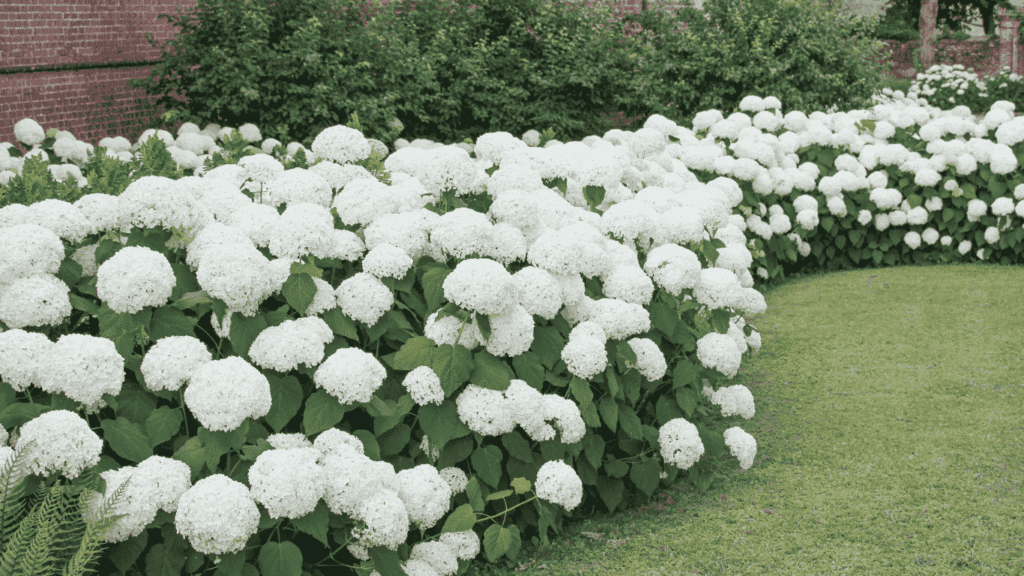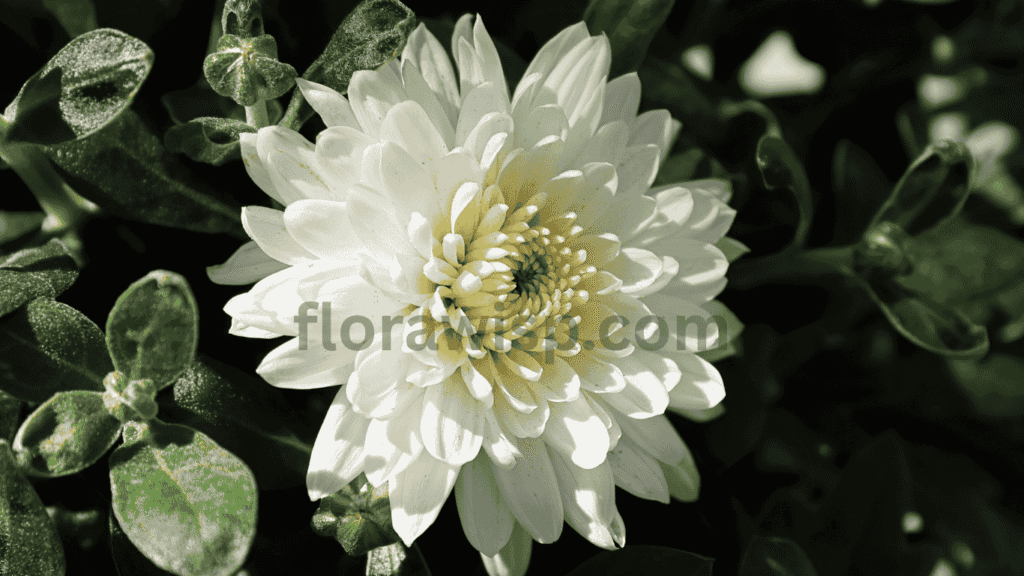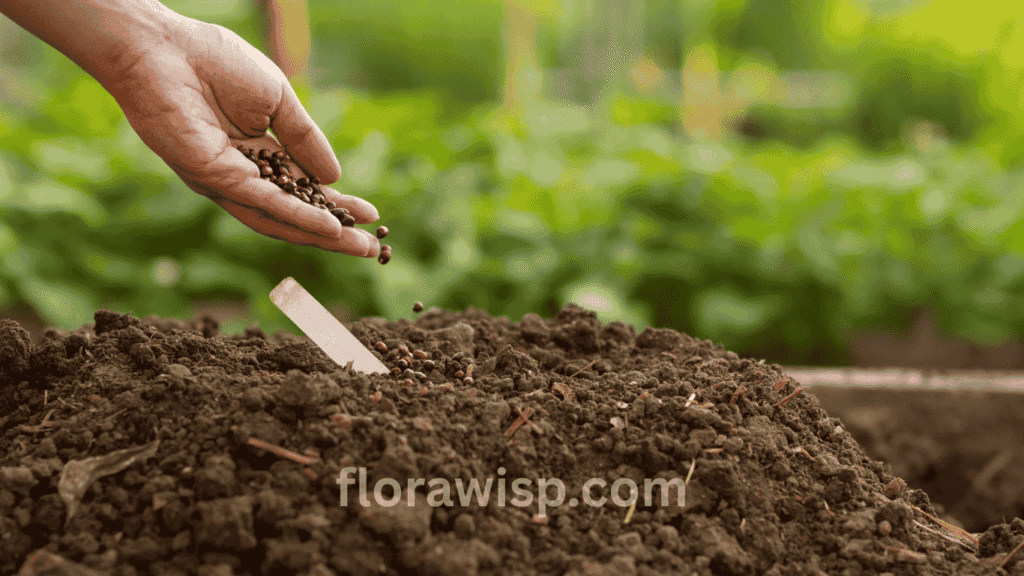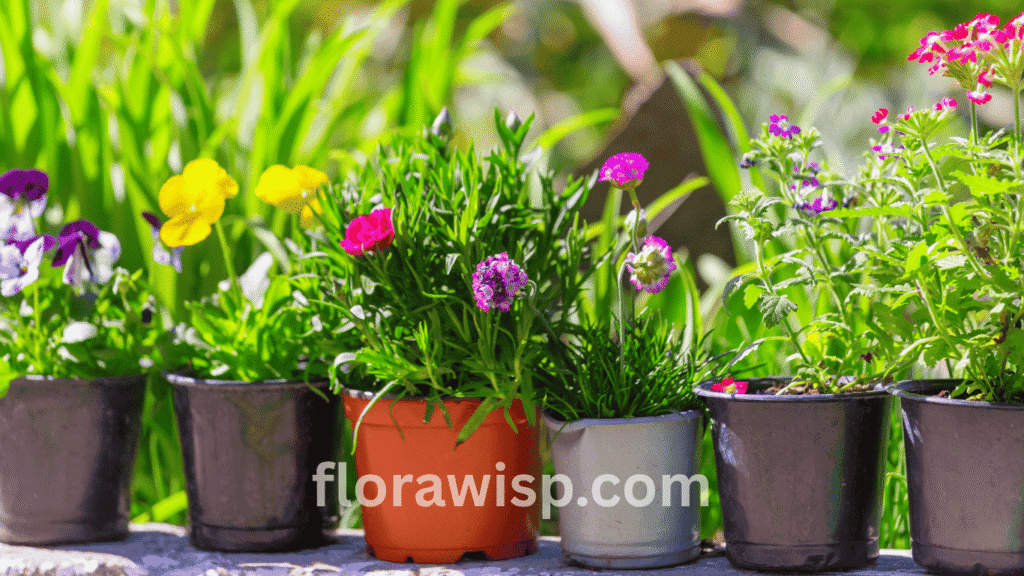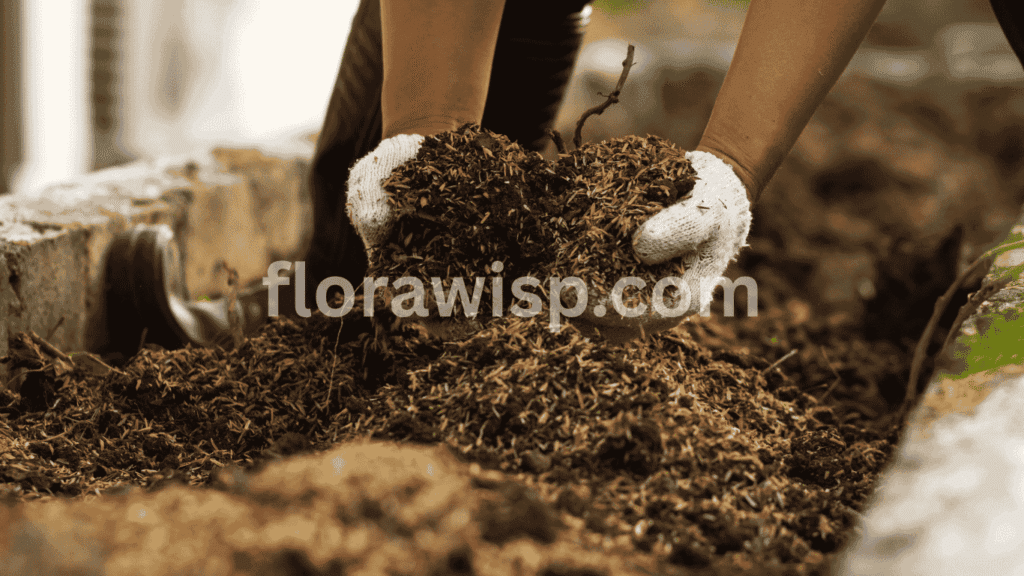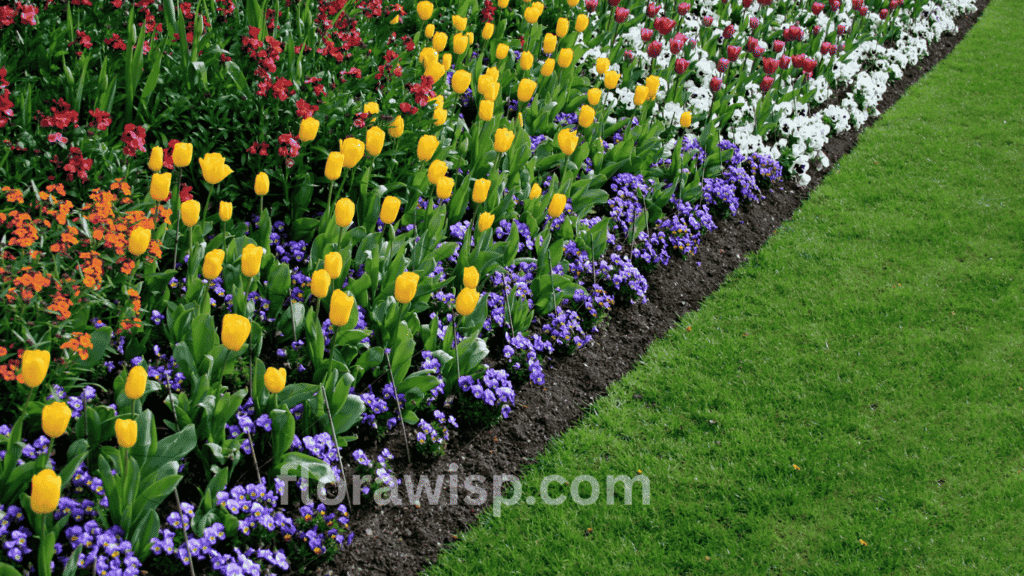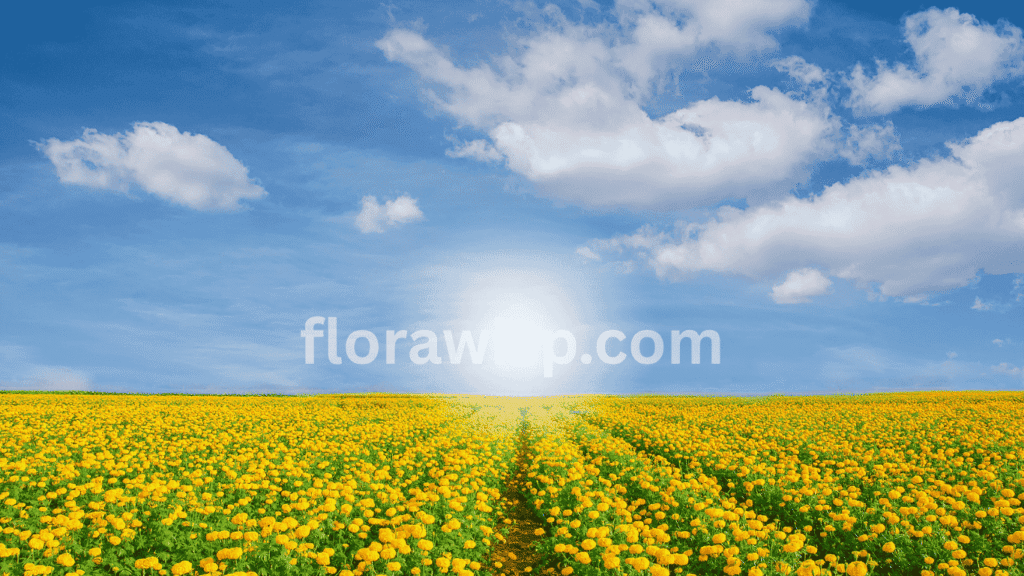Hydrangea flowers are beloved for their bold blooms, shifting colors, and unmatched versatility in both gardens and floral design. Whether you’re planting a shady border, designing a wedding bouquet, or styling your home with dried or artificial arrangements, hydrangeas adapt beautifully to every setting.
This all-in-one guide covers the most popular types of hydrangea flowers, explains how soil pH affects bloom color, and offers expert fixes if your plants aren’t flowering. From the classic pink and white varieties to vibrant Blue Hydrangea types, you’ll discover how to grow and care for each with confidence.
From buying tips to planting flowers and seasonal care to troubleshooting bloom issues and creating meaningful floral designs, this guide delivers everything you need to grow, display, and enjoy hydrangea flowers year-round indoors or out.
Explore Here
Types of Hydrangea Flowers
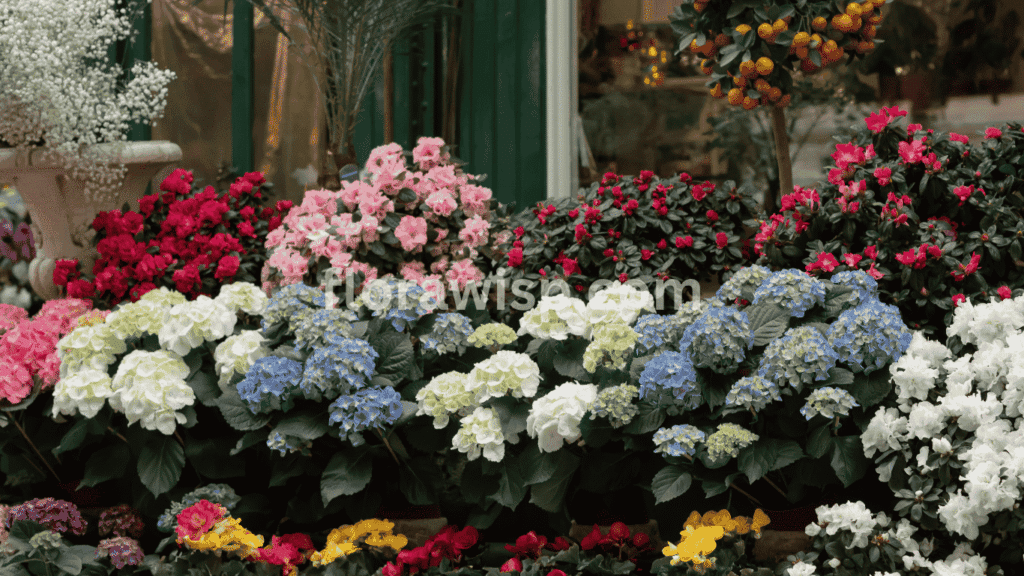
Hydrangea flowers are a true highlight of American gardens, offering a wide range of colors, shapes, and blooming patterns. As someone who’s nurtured these beauties for years, I’ve come to appreciate not just their visual charm but how each type fits into a specific landscape need. From the deep blues of mopheads to the airy lacecaps and the classic elegance of the white hydrangea, every variety brings its own story and structure. Let’s explore the most common types grown in the U.S. and what their flower colors truly mean.
1. Bigleaf Hydrangea (Hydrangea macrophylla)
- Zones: 5–9
- Height/Spread: 3–6 ft tall and wide
- Sun or Shade? Partial shade preferred
- Bloom Time: Late spring to summer
- Flower Color: Blue, pink, or purple depending on soil pH
These are your classic mophead or lacecap hydrangeas. I’ve used aluminum sulfate to deepen the blues in mine, and lime for vibrant pinks. Their color-shifting ability makes them a garden favorite.
2. Panicle Hydrangea (Hydrangea paniculata)
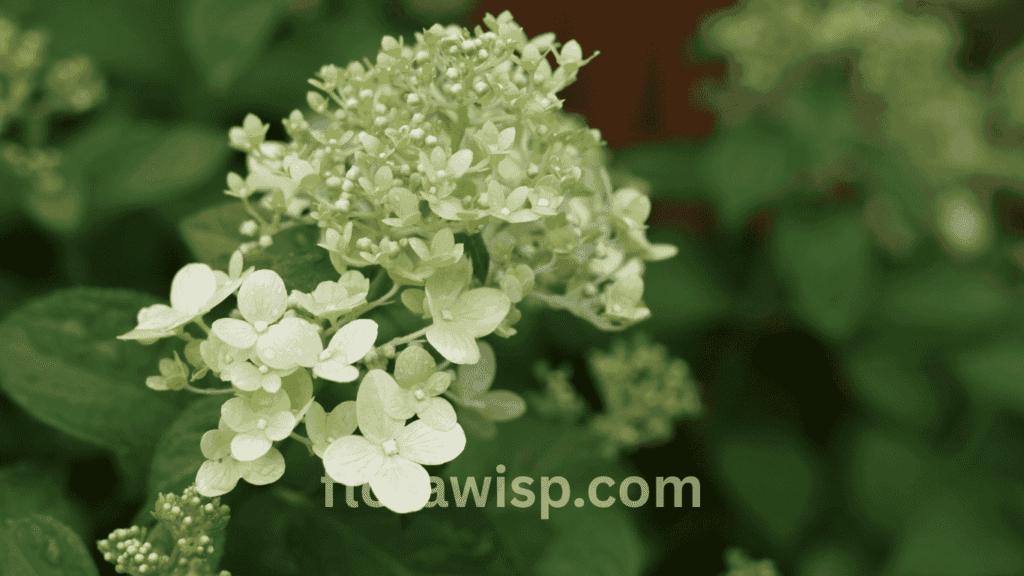
Zones: 3–8
Height/Spread: 6–15 ft tall, 6–12 ft wide
Sun or Shade? Full sun to partial shade
Bloom Time: Midsummer to fall
Flower Color: White turning to pink or lime-green
Limelight hydrangeas are my go-to for long-lasting color and structure. Their cone-shaped blooms hold up beautifully in full sun and attract butterflies throughout the season.
3. Oakleaf Hydrangea (Hydrangea quercifolia)
- Zones: 5–9
- Height/Spread: 4–8 ft tall and wide
- Sun or Shade? Full sun to part shade
- Bloom Time: Early to midsummer
- Flower Color: White aging to rose or tan
Their foliage turns deep burgundy in fall, adding year-round interest. These thrive near my woodland beds where other shrubs struggle.
4. Smooth Hydrangea (Hydrangea arborescens)
- Zones: 3–9
- Height/Spread: 3–5 ft tall and wide
- Sun or Shade? Full sun to part shade
- Bloom Time: Early summer
- Flower Color: Creamy white, fading to green
Annabelle is a crowd favorite. Her massive blooms create a “flowerful hydrangea” display in group plantings.
5. Climbing Hydrangea (Hydrangea anomala petiolaris)
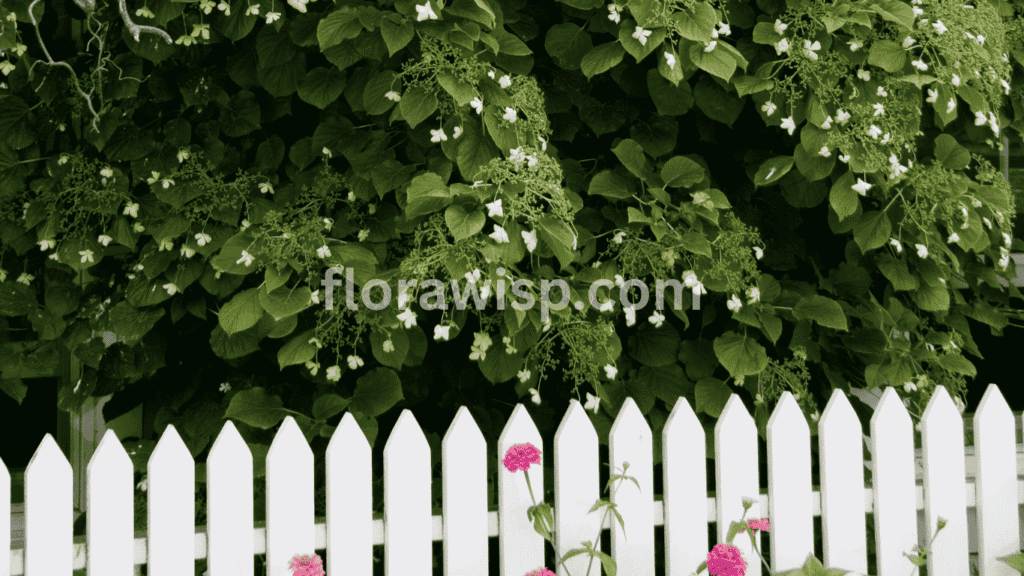
Zones: 4–8
Height/Spread: Vines up to 50 ft long
Sun or Shade? Shade to partial sun
Bloom Time: Early summer
Flower Color: White
Perfect for stone walls and fences. It took two seasons for mine to take off, but now it’s a summer showstopper.
6. Mountain Hydrangea (Hydrangea serrata)
- Zones: 6–9
- Height/Spread: 2–4 ft tall and wide
- Sun or Shade? Morning sun, afternoon shade
- Bloom Time: Late spring to summer
- Flower Color: Blue to pink based on soil pH
Hardier than Bigleaf, and better for colder winters, their lacecap blooms add a delicate texture to garden borders. For gardeners seeking dependable color and strong performance across seasons, Limelight Hydrangea offers a bold, sun-loving alternative that pairs beautifully with softer varieties.
From soft pastels to vivid hues, hydrangea flowers offer unmatched diversity. Whether you’re creating a romantic border, a bold hedge, or a shaded backdrop, there’s a type and a color for every vision.
Planting Hydrangeas: A Complete Guide for Beginners
Establishing healthy hydrangea flowers starts long before the first bloom begins at planting. The right time, location, soil preparation, and technique all play a critical role in ensuring robust growth and spectacular blossoms.
When to Plant Hydrangeas
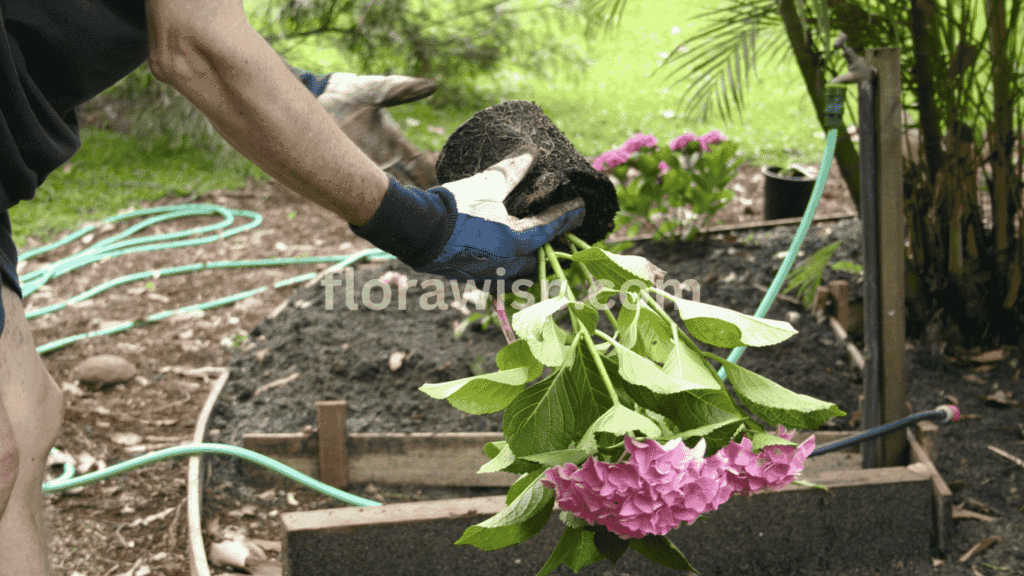
The ideal planting windows are early spring after the last frost or early fall, giving roots time to settle before temperature extremes. Avoid planting in summer heat unless you’re using container-grown hydrangeas with consistent watering.
Tip: Planting in fall in southern USDA Zones (7–9) gives hydrangeas a head start for the next blooming season.
Where to Plant Hydrangeas
Success with hydrangeas heavily depends on site selection:
- Sunlight: Most varieties thrive with morning sun and afternoon shade. Panicle types can handle more sun, while bigleaf and mountain hydrangeas prefer protection from intense midday rays.
- Air Flow: Choose a location with good air circulation to reduce mildew risk, especially in humid regions.
- Space: Give each plant enough room at least 3 to 6 feet apart depending on mature size. Crowding limits airflow and flower production.
- Protection: Avoid exposed areas prone to strong winds. Also steer clear of planting under dense trees, which limit sunlight and compete for water.
How to Prepare Soil for Hydrangeas
A healthy start begins underground. Hydrangeas are heavy feeders and thrive in rich, moisture-retentive soil that also drains well. Before planting, loosen the soil to a depth of at least 12 inches and enrich it with compost, aged manure, or other organic matter to improve both fertility and texture.
Soil pH and Amendments for Color and Health
Soil pH directly influences bloom color in bigleaf and mountain hydrangeas. Acidic soils (pH 5.2–5.5) encourage blue flowers, while alkaline soils (pH 6.0 and above) shift blooms toward pink. Test your soil before planting and amend accordingly. To retain moisture and recreate their native woodland conditions, incorporate pine bark fines, leaf mold, or finely shredded mulch into the planting area. For gardens with dense clay, slightly raising the bed helps improve drainage and root health. I always add a handful of bone meal at planting time it’s rich in phosphorus and supports strong root systems and early bud development.
Planting Steps (In-Ground)
- Dig a hole 2–3 times wider than the root ball, but no deeper.
- Loosen tangled roots gently to help them spread.
- Position the plant so the crown sits slightly above soil level to avoid rot.
- Backfill with amended soil, firming lightly as you go.
- Water thoroughly and mulch with 2–3 inches of organic material keeping it away from the stem base.
I often add a handful of bone meal when planting it boosts root strength and early bud development.
Growing Hydrangeas in Pots
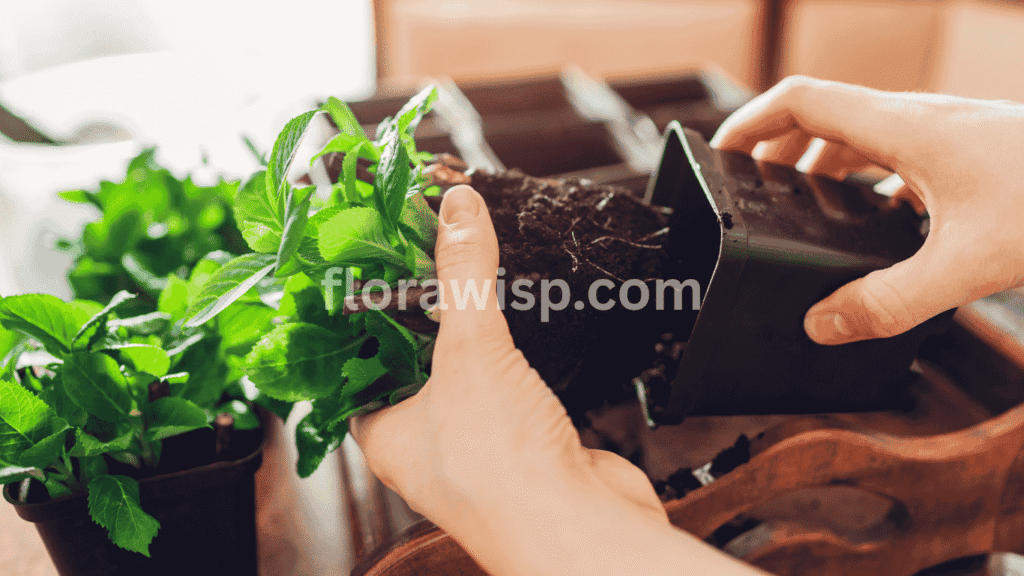
Hydrangeas thrive in containers too, especially compact varieties like dwarf panicles and mini bigleaf types.
- Use a premium potting mix, not garden soil.
- Choose containers at least 16 inches wide with ample drainage holes.
- Mix in slow-release fertilizer or water-soluble bloom boosters monthly.
- Avoid placing pots in the full afternoon sun; they dry out too quickly.
- Elevate containers off concrete in hot zones to prevent root overheating.
In colder zones (USDA 5–6), move pots into a sheltered, unheated space over winter to protect roots from deep freeze. If you’re new to container gardening, check out our full guide on potted hydrangea for step-by-step tips on planting, positioning, and seasonal care.
Aftercare Essentials
- Water deeply 1–2 times a week for the first 6–8 weeks.
- Use mulch to retain moisture and suppress weeds.
- Avoid overhead watering to prevent leaf spots water at the base instead.
By understanding your hydrangea’s needs from day one sunlight, spacing, soil, and care you’ll lay the foundation for years of lush foliage and bloom cycles.
Real vs Artificial Hydrangeas: Which One Should You Buy?
When choosing between real and artificial hydrangea flowers, it all depends on where and how you plan to use them. Over the years, I’ve planted countless live hydrangeas in garden beds, but I’ve also arranged faux ones for weddings and home decor. Both options have their place, and understanding the difference will save you time, money, and maintenance.
Real Hydrangea Flowers: Beauty with Benefits
Real hydrangea flowers bring your landscape to life. They attract pollinators like butterflies and bees and offer seasonal interest from late spring to early fall. If you’re gardening in USDA Zones 3–9, there’s a live variety for nearly every climate. From fragrant panicle types in full sun to elegant oakleaf hydrangeas in part shade, their living charm simply can’t be duplicated.
I personally love how blue hydrangea flowers cool down shaded spots, while pink varieties brighten up a front porch container. But they do require care watering, pruning, and pest protection. If you’re someone who enjoys hands-on gardening, real hydrangeas are deeply rewarding.
Artificial Hydrangea Flowers: Elegant, and Long-Lasting
For indoor arrangements or special events, artificial hydrangea flowers offer a hassle-free solution. They don’t wilt, fade, or need watering, making them ideal for weddings, receptions, and home interiors.
- Silk hydrangea flowers and hydrangea silk flowers bulk are perfect for creating full bridal bouquets or table runners.
- Preserved hydrangea flowers and hydrangea pressed flowers give you the look of real blooms with added longevity.
- Faux hydrangea flowers, imitation hydrangea flowers, and hydrangea plastic flowers work great for commercial or office decor.
I once arranged blue hydrangea silk flowers for a summer wedding in Arizona. They looked stunning from ceremony to reception. No drooping, no fading.
For long-lasting, zero-maintenance decor, I always recommend white hydrangea artificial flowers for indoor use especially in rooms with limited sunlight. They brighten up shelves, desks, and corner nooks effortlessly.
If budget and time matter, fake hydrangea flowers are an excellent investment. Whether you’re styling a venue, creating centerpieces, or flipping home decor pieces for resale, their versatility pays off.
Why Your Hydrangea Isn’t Flowering, And How to Fix It
One of the most frustrating problems I see among gardeners is when hydrangea flowers fail to bloom. I’ve dealt with it more than once in my own backyard. The good news? Once you know what to look for, the fix is usually straightforward.
1. Pruning at the Wrong Time
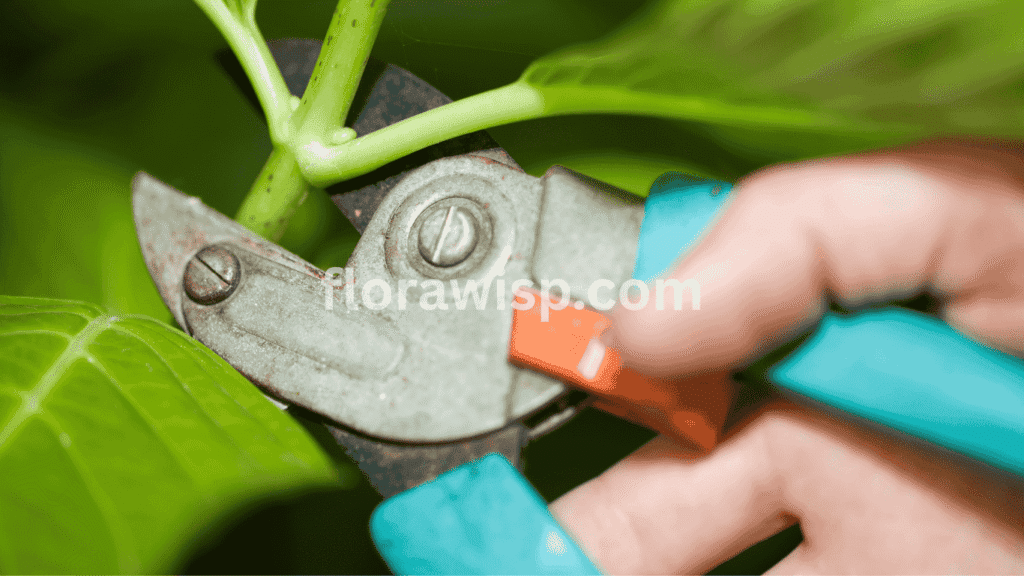
Many hydrangea varieties bloom on old wood, especially Bigleaf and Oakleaf types. If you prune them in late winter or early spring, you may be removing the very buds that would have produced flowers. I always prune my hydrangeas right after they finish blooming.
2. Sunlight Stress
Hydrangea flowering bushes thrive in morning sun and afternoon shade. If your plant gets too much direct sunlight, it may suffer from heat stress and not bloom. On the other hand, too much shade reduces energy for bud development. Find the balance it’s key.
3. Soil & Fertilizer Imbalance
Too much nitrogen encourages leaf growth at the expense of blooms. I use a balanced fertilizer with lower nitrogen content something like 10-30-10 for better results. Also, check the pH. Blue hydrangea flowers need acidic soil, while pink ones prefer alkaline.
4. Water & Moisture Management
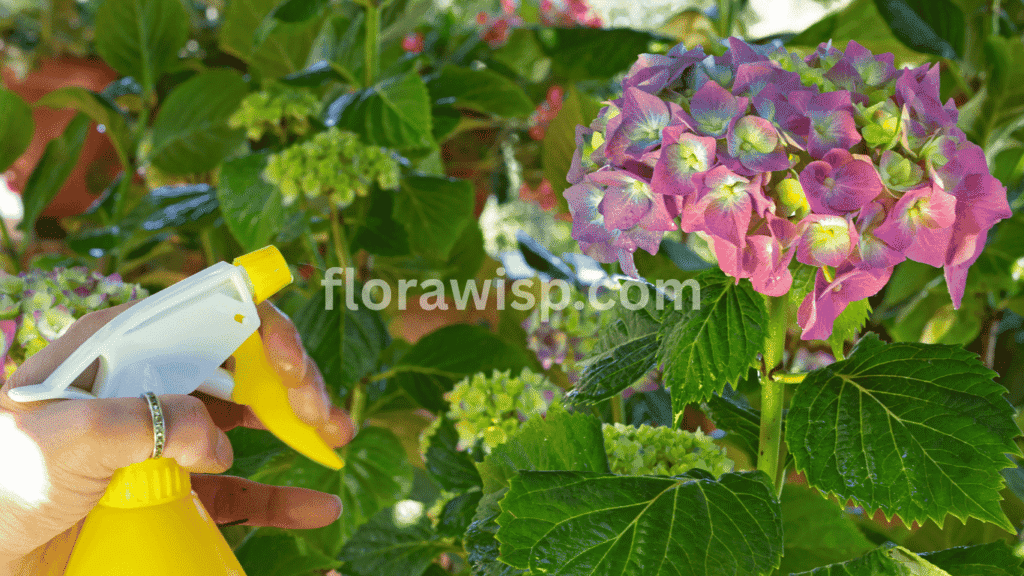
Hydrangeas are thirsty but hate soggy roots. I’ve found that consistent watering, not overwatering is the trick. Mulch helps retain moisture without waterlogging the soil. Improper watering can lead to wilting or browning hydrangea flowers.
5. Cold Damage & Pests
Late spring frosts or harsh winters often kill off flower buds. Cover your shrubs during unexpected cold snaps. Also watch for deer and common pests like aphids or spider mites; they can stress your plant and halt blooming.
6. Be Patient with New Plants
Newly planted hydrangeas often focus on root growth during their first season. Don’t expect a full bloom show right away. Last year, my panicle hydrangea took a full year before rewarding me with a summer full of blooms.
If your hydrangea has dead or dried blooms, snip them above a healthy bud to encourage new growth. With careful pruning, steady watering, and the right sun, your hydrangea flowers will return stronger and brighter each season.
Hydrangeas for Weddings, Bouquets & Special Occasions
When it comes to wedding flowers, few choices are as timeless and elegant as hydrangea flowers. As a gardener who has helped supply blooms for weddings across the country, I’ve seen firsthand how hydrangeas can transform a floral arrangement. Their lush, round clusters and range of colors make them a versatile choice for both formal and rustic celebrations.
Why Hydrangeas Are a Bridal Favorite
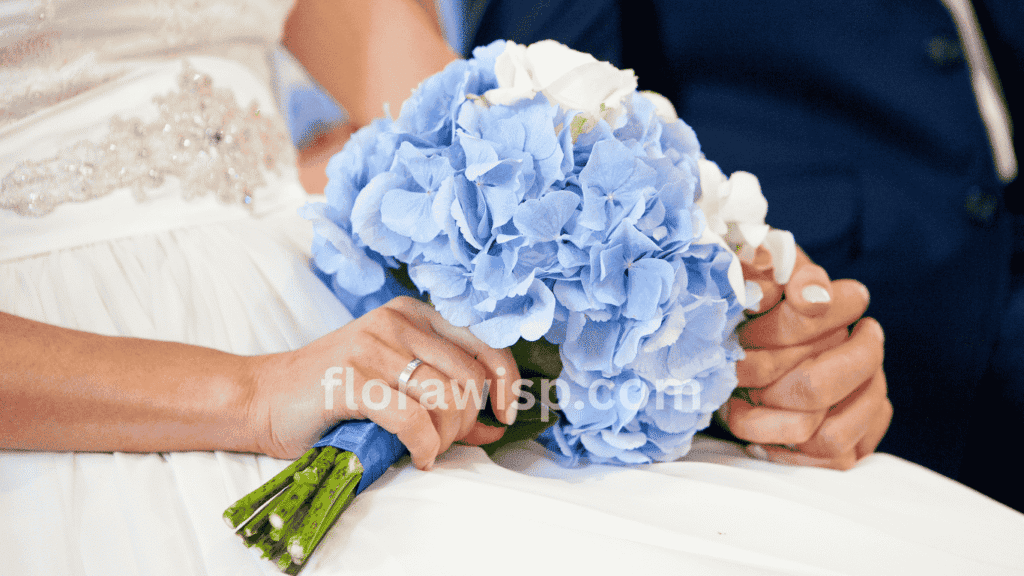
For bridal work, I often use hydrangea bridal flowers to add texture and volume without overwhelming the design. Blue hydrangea wedding flowers are a go-to for coastal weddings and spring events; they pair beautifully with white roses and eucalyptus. For more traditional or formal ceremonies, white hydrangeas never go out of style. Their soft elegance suits any venue, from grand halls to intimate garden setups. And for romantic or countryside weddings, pink flowering hydrangeas bring a delicate, storybook charm.
Fullness Without Fuss: Hydrangeas in Bouquets
A big advantage of using hydrangea flowers in bouquets is that they offer fullness with fewer stems. One well-placed bloom can carry a lot of visual weight, saving space and cost in large arrangements. I’ve arranged full hydrangea flowers bouquets as well as mixed styles with lilies, peonies, and greenery each combination holding its own unique feel.
Faux Hydrangeas for Long-Lasting Beauty
If durability is a concern, such as for destination weddings or summer heat, I often turn to silk hydrangeas. Mixing blue or white hydrangea wedding flowers with faux varieties ensures the bouquet holds its shape through long photoshoots and travel. It’s a trick I’ve used many times without guests ever noticing.
Are There Alternatives?
While there are flowers similar to hydrangea like stock or viburnum that can offer similar softness, few flowers provide the same balance of color options, meaning, and structure. For meaningful occasions like weddings, hydrangea flowers remain one of my most trusted blooms.
How to Cut, Dry & Preserve Hydrangea Flowers
Preserving hydrangea flowers is one of my favorite off-season projects. As a gardener, there’s something deeply satisfying about extending the life of these blooms beyond their peak in the garden. Whether you want to dry them for décor or craft purposes, or simply keep them around longer in a vase, the method you use makes all the difference.
Best Time to Cut Hydrangea Flowers
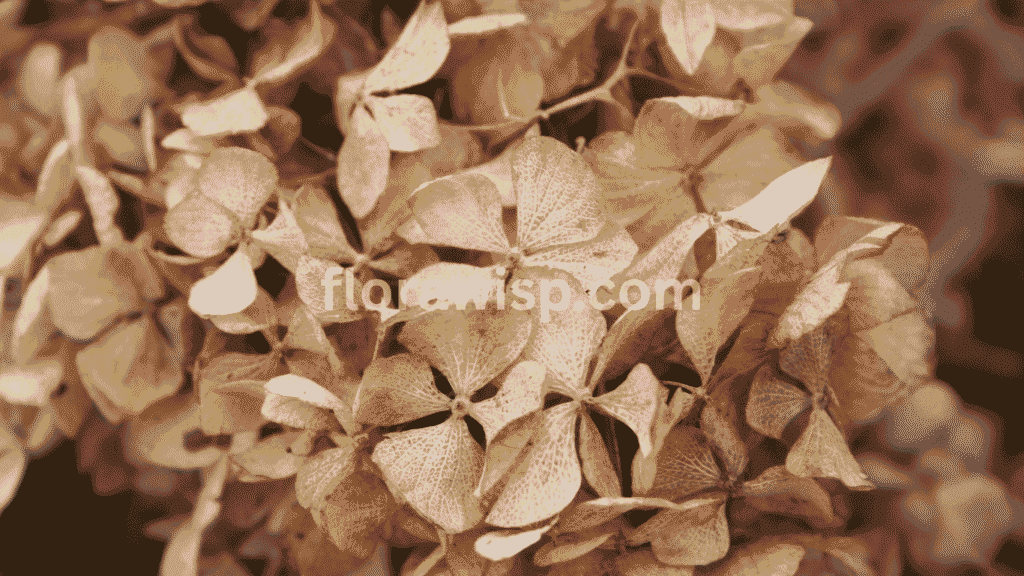
The ideal time to cut hydrangea flowers is in late summer, when the blooms are fully open but not yet brittle. I’ve learned from experience that waiting too long causes the petals to brown or curl. Use clean, sharp pruners and make your cuts just above a pair of healthy leaves.
For limelight hydrangea cut flowers, I typically harvest in the early morning while the plant is still hydrated. Always choose blooms that feel papery to the touch; these preserve better than fresh, juicy ones.
Drying Methods for Hydrangeas
There are several ways to dry hydrangea flowers, depending on your goal:
- Air Drying: Tie the stems in small bunches and hang them upside down in a cool, dry space with good air circulation. This keeps the colors muted but soft.
- Silica Gel: Bury the blooms in a container of silica gel for a faster process that preserves brighter color.
- Microwave Pressing: For pressed hydrangea flowers, use parchment and a microwave press. It’s fast and ideal for keepsakes like cards or bookmarks.
Preserving Hydrangeas with Glycerin
If you want a soft texture that lasts, glycerin works wonders. Mix one part glycerin with two parts water and place freshly cut stems in the solution. Within two to three weeks, the hydrangea flowers will feel leathery but beautiful.
Vase Care Tips
If you’re displaying hydrangea flowers in a vase, cut stems at a 45-degree angle and strip off all leaves below the waterline. Use clean water and change it every two days. With this care, your hydrangeas can stay fresh for up to 10 days.
Whether you’re preserving for seasonal décor, resale, or personal crafts, dried and preserved hydrangea flowers offer a charming touch of garden beauty year-round.
Where to Buy Hydrangea Flowers (Online & Nearby)
Whether you’re starting a new garden bed or decorating a wedding, knowing where to find quality hydrangea flowers makes all the difference. Over the years, I’ve purchased from local growers, wholesale vendors, and trusted online retailers and each option has its strengths.
Buying Fresh Hydrangea Plants
For living hydrangea flowers, I recommend visiting local nurseries or home garden centers during peak season. These places often carry healthy, climate-appropriate varieties. When I buy for my own garden, I rely on trusted sources like Proven Winners or Nature Hills for mail-order options.
Finding Artificial or Silk Hydrangeas
If you’re decorating an event or building long-lasting floral arrangements, artificial hydrangea flowers are a smart choice. Search for terms like:
- White hydrangea silk flowers
- Blue hydrangea silk flowers
- Hydrangea silk flowers bulk
These are widely available through floral supply sites and marketplaces like Afloral or Michaels. I’ve used them for indoor centerpieces where natural light is limited.
Buying in Bulk or for Events
For weddings or large décor projects, sourcing hydrangea bulk flowers or ordering from wholesale hydrangea flowers vendors can save both time and money. I’ve coordinated multiple weddings this way, mixing both fresh and faux to meet budget and design needs.
Local Options & Delivery
If you’re in a rush or want same-day flowers, search “hydrangea flowers near me” or use local flowers’ hydrangea delivery services. I’ve often used these for gifting especially during holidays and special occasions.
Whether you’re planning a garden, decorating for an event, or surprising someone with a thoughtful bouquet, reliable sources of hydrangea flowers make your experience smoother and more enjoyable.
FAQs
Q. Why is my hydrangea not flowering?
Hydrangeas may not flower due to incorrect pruning, low light, or nutrient-poor soil. Prune only after bloom, give them morning sun, and feed them phosphorus-rich fertilizer. I once lost an entire season’s bloom by pruning too early a common but fixable mistake.
Q. How to dry hydrangea flowers?
To dry hydrangeas, cut mature blooms and hang them upside down in a dry room for 2–3 weeks. Air drying preserves their form naturally. I’ve also used silica gel to maintain vibrant color in blue hydrangeas for craft projects.
Q. Should I cut off the dead hydrangea flowers?
Yes, remove dead hydrangea flowers to encourage fresh blooms and maintain plant health. I always deadhead by snipping just above a healthy bud or leaf node once the blooms start to brown. This simple task not only cleans up the shrub’s look but also signals the plant to redirect energy into new flowering. For varieties like panicles or smooth hydrangeas, deadheading can even extend blooming into fall. I’ve seen this work year after year in my own garden beds.
Q. How to preserve hydrangeas?
To preserve hydrangeas, either dry them fully or use a glycerin solution for soft texture retention. Personally, I find air-drying limelight hydrangea cut flowers yield the best results. Color holds well, and they last for months in a vase. For wedding keepsakes or crafts, I’ve also used silica gel with excellent success. Just remember to cut blooms when they’re fully mature but still vibrant, ideally late summer. The earlier you act, the better the preserved flower turns out.
Q. How to revive wilted hydrangeas?
To revive wilted hydrangeas, trim the stems at an angle and place them in warm water for a few hours. For seriously drooping blooms, submerge the entire flower head in cool water. I’ve used this method many times when prepping last-minute event bouquets, especially florist-bought stems that spent too long in transit. Most perk back up within 4–6 hours. Proper hydration, especially after cutting, is key to bringing hydrangea flowers back to life.
Q. Where to buy hydrangea flowers?
Buy hydrangea flowers from local nurseries for fresh plants or order online from trusted retailers like Nature Hills and Proven Winners. I often use “hydrangea flowers near me” on Google Maps to find seasonal deals nearby. For events or home décor, artificial and preserved hydrangeas can be found in bulk on floral wholesale sites. Always check product freshness, return policies, and color accuracy especially when buying dried or silk hydrangea flowers for special occasions or resale.
Q. How do I cut hydrangeas?
Cut hydrangea flowers just above a leaf pair using sharp, clean pruners. I always recommend cutting early in the morning when the blooms are most hydrated. Right after cutting, place stems in lukewarm water and let them rest for a few hours before arranging. This method keeps the flowers fresh longer, whether you’re decorating or preserving. I’ve followed this exact routine for years when prepping vase arrangements and drying blooms for off-season displays.
Conclusion
Hydrangea flowers bring timeless charm to gardens, homes, and events. With a wide variety of types, vibrant colors, and both real and faux options, they cater to nearly every need. Whether you’re tackling bloom issues, styling a bouquet, or drying stems for winter decor, there’s a hydrangea trick for everyone.
For me, each hydrangea tells a story: a change in season, a celebration, or a quiet moment in the garden. If you’re just starting or expanding your garden, hydrangeas are one of the most rewarding flowers to grow, gift, or decorate with. Among my personal favorites are the soft and romantic Pink Hydrangea varieties perfect for adding warmth, structure, and sentiment to any landscape. Let their color and fullness speak for your love of nature.
References
Proven Winners® – Hydrangea Varieties & Planting Guides
University of Georgia Extension – Hydrangeas for Georgia Gardens (Circular 973)
North Carolina State Extension – Pruning Hydrangeas
Gardener, M.Sc. Horticulture
Elara Bennet is a gardening writer from Austin, TX, passionate about sustainable lawns and blooms. Read full bio →

